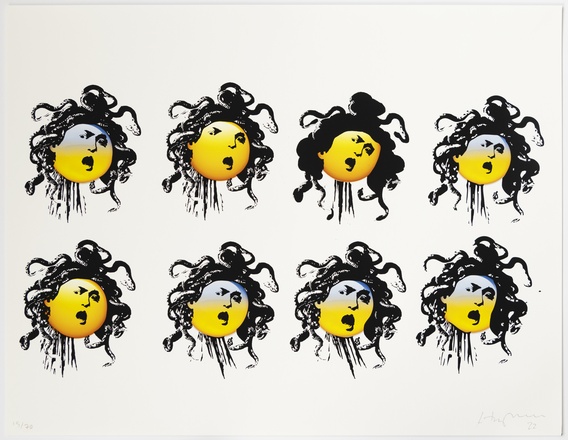Jacqueline Humphries
Medusacon (2022)
The New York artist Jacqueline Humphries subjects abstract painting to the effects of new technologies, using her chosen medium to engage the challenges of a networked society. Her work integrates the nuances of digital communication with the formal and psychic possibilities of serial reproduction, as seen to full effect in a recent major survey exhibition at the Wexner Center for the Arts, Columbus. Humphries often uses laser-cut stencils to generate dense painted grids of emoticons: pared-down representations of human expressions made from standard punctuation marks or other keyboard characters. But the artist also utilizes the more popular – and more corporate – form of emotional coding: the Apple-designed SMS emoji. Select emojis even serve as the titles for some of Humphries’s works, thus imbuing her paintings with a feeling or mood that may inflect how the viewer perceives them. For TEXTE ZUR KUNST, Humphries has taken a blank emoji and added stenciled elements of Caravaggio’s 1597 depiction of Medusa’s severed head. Arguably the most iconic face from ancient mythology – a once-beguiling woman who, according to Ovid’s “Metamorphoses,” was cursed by Athena after being raped by Poseidon – Medusa’s expression varies in each of the serial iterations, morphing from terrified to fearsome or even comical. Through repetition, Humphries’s “Medusacon” questions this now-dominant means to convey our mental states; emojis petrify our potentially limitless range of expression, confining it to a predetermined pool of canned emotions from which to choose.

